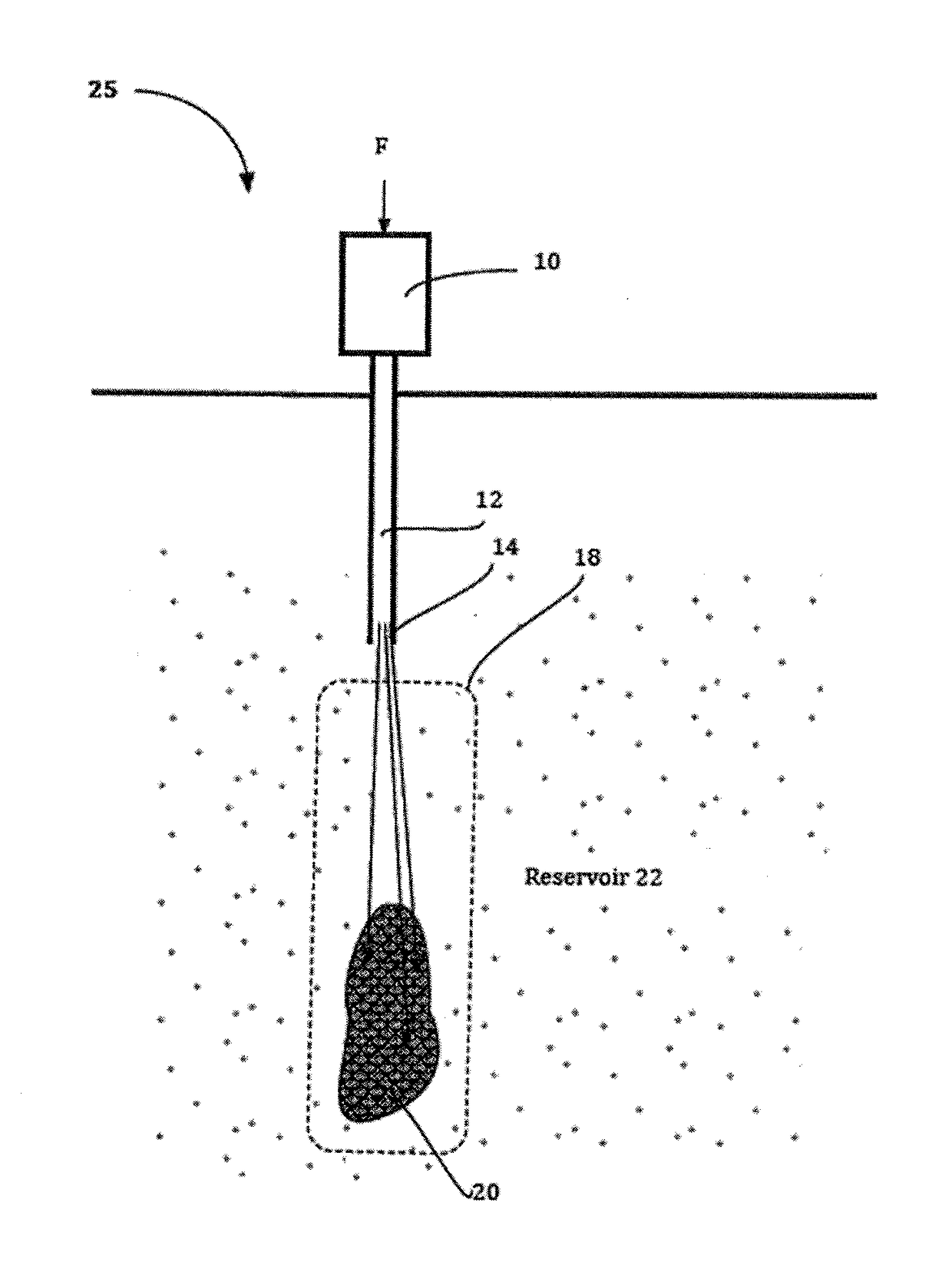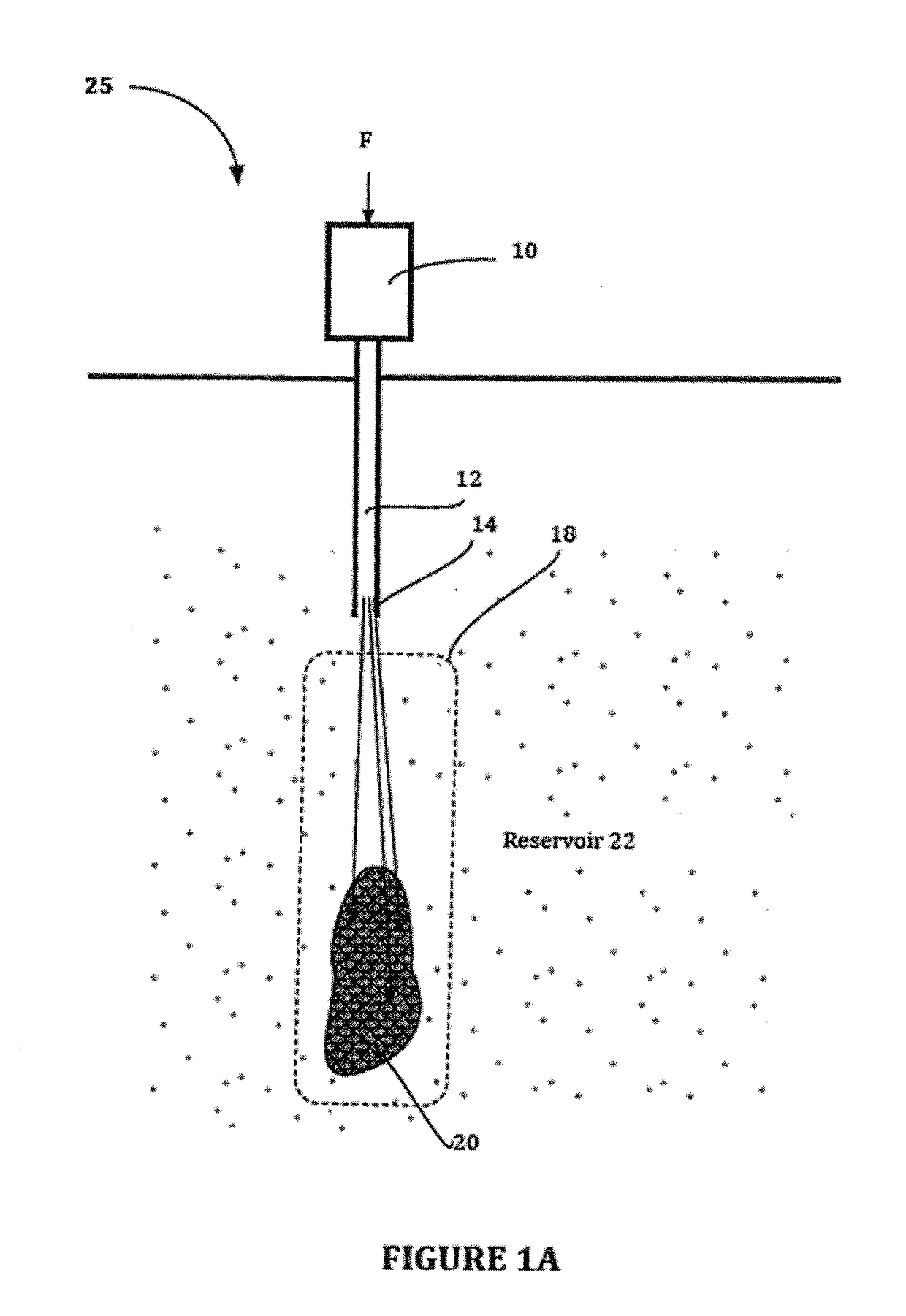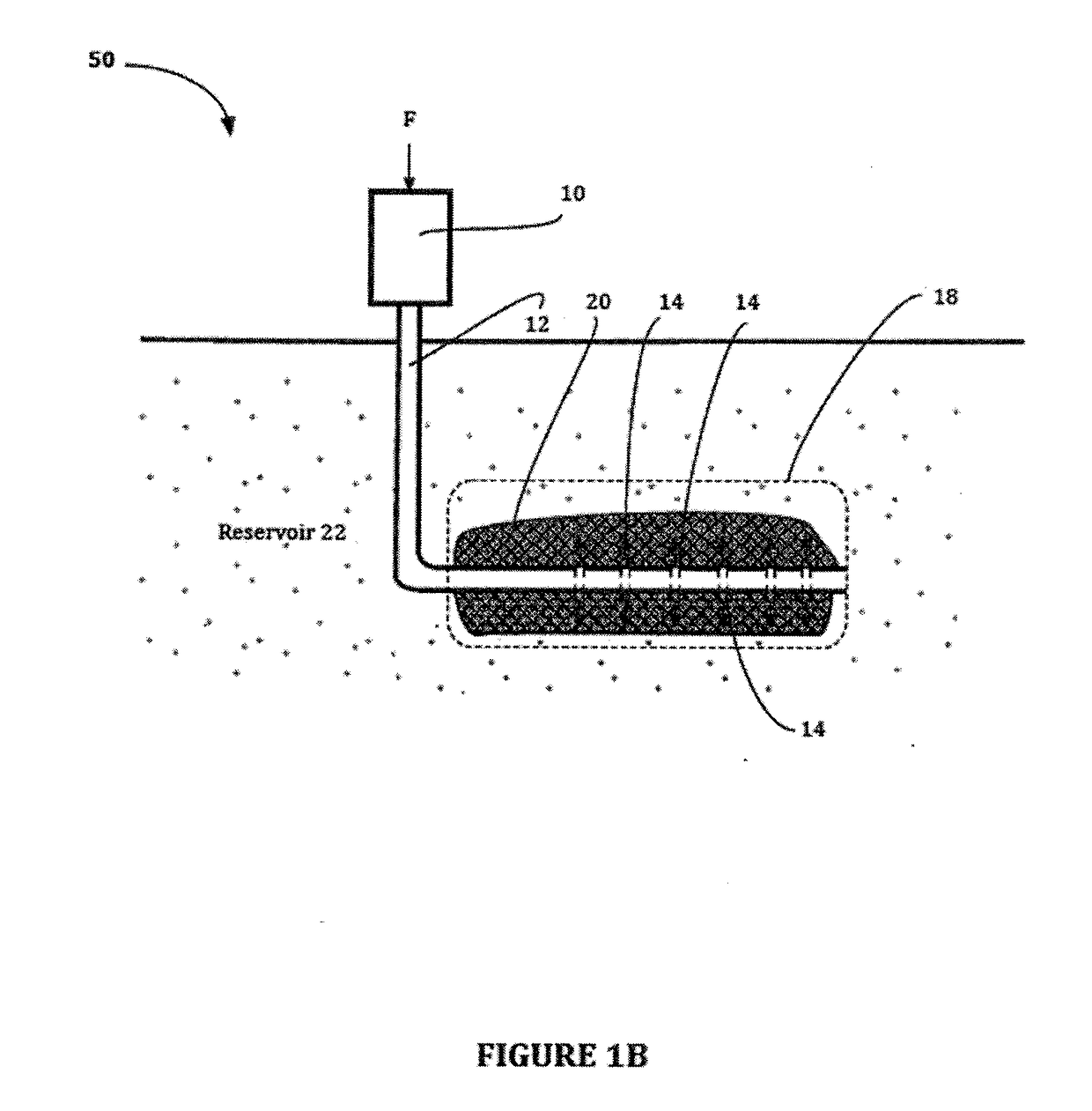Methods For Microbially Enhanced Recovery of Hydrocarbons
- Summary
- Abstract
- Description
- Claims
- Application Information
AI Technical Summary
Benefits of technology
Problems solved by technology
Method used
Image
Examples
example 1
Hydrocarbon- and Nitrate-Mediated Microbially Enhanced Oil Recovery in Low Pressure Bioreactors
[0109]Experiments were conducted with heavy oil from the Medicine Hat Glauconitic C (MHGC) field near Medicine Hat, Alberta, Canada. The MHGC field is a shallow (850 m), low-temperature (30° C.) field from which heavy oil with an American Petroleum Institute (API) gravity of 12-18° and a viscosity of 3400 cP at 20° C. is produced by water injection. Produced water from producing well 5 (5PW) was used as a source of heterotrophic nitrate reducing bacteria (hNRB). These were grown in 120-mL serum bottles, containing 47.5 mL of an aqueous phase and 1 ml of an oil phase. The aqueous phase consisted of sterile anaerobic CSBK medium, containing g / L: 1.5 NaCl, 0.05 KH2PO4, 0.32 NH4Cl, 0.21 CaCl2.2H2O, 0.54 g MgCl2.5H2O and 0.1 KCl; 30 mM NaHCO3, nutrients including trace elements and either 0 or 80 mM NaNO3. The oil phase was 1 ml of MHGC oil or 1 ml of MHGC oil with additional electron donors (e...
example 2
Hydrocarbon- and Nitrate-Mediated Microbially Enhanced Oil Recovery in High Pressure Bioreactors
[0116]Up-flow stainless steel bioreactors were packed with sand and flooded with CSBK medium at high pressure (400 psi=27.2 atm) using a TELEDYNE Isco D Syringe pump connected to a backpressure regulator. These bioreactors had a pore volume PV=35 ml. Bioreactors were then flooded with 1 PV of heavy oil or with 1 PV of heavy oil with 11.4 mM of toluene. Both bioreactors were then flooded with CSBK to 0.45 PV of residual oil in stage 1. The oil content of the produced oil-water mixture was determined daily by adding dichloromethane and measuring with a spectrophotometer. Following injection of 15 PV of CSBK a total of 0.5 PV of oil was produced with approximately 0.45 PV of oil remaining in the bioreactors in stage 1. In stage 2 bioreactors were injected with 0.5 PV of an appropriate microbial culture or with an appropriate microbial culture with 80 mM nitrate. Bioreactors were then incubat...
example 3
Increasing Low Molecular Weight Hydrocarbon Content of ROIP by Injection of an Aqueous Solution into a Low Pressure Bioreactor
[0118]In field applications of the proposed MEOR technology, the content of low molecular weight hydrocarbon in the oil phase must be increased by injection, e.g. of a solution of the low molecular weight hydrocarbon in water or microbial stimulation fluid. In order to increase the toluene concentration of the ROIP, low pressure bioreactors, as in example 1, containing 0.45 PV of residual MHGC oil were injected with 2 PV of a solution of 3 mM toluene in water at a flow rate of either 1.0 PV / day or 0.5 PV / day. Following this, the bioreactors were sacrificed and the toluene concentration in oil extracted from 5 fractions from the bottom to the top were measured. In the bioreactor injected with 0.5 PV / day these were 9.3, 3.6, 2.0, 1.9 and 3.7 mM, respectively, whereas in the bioreactor injected with 1.0 PV / day these were 4.4, 1.9, 2.4, 1.9 and 2.8 mM, respective...
PUM
 Login to View More
Login to View More Abstract
Description
Claims
Application Information
 Login to View More
Login to View More - R&D
- Intellectual Property
- Life Sciences
- Materials
- Tech Scout
- Unparalleled Data Quality
- Higher Quality Content
- 60% Fewer Hallucinations
Browse by: Latest US Patents, China's latest patents, Technical Efficacy Thesaurus, Application Domain, Technology Topic, Popular Technical Reports.
© 2025 PatSnap. All rights reserved.Legal|Privacy policy|Modern Slavery Act Transparency Statement|Sitemap|About US| Contact US: help@patsnap.com



